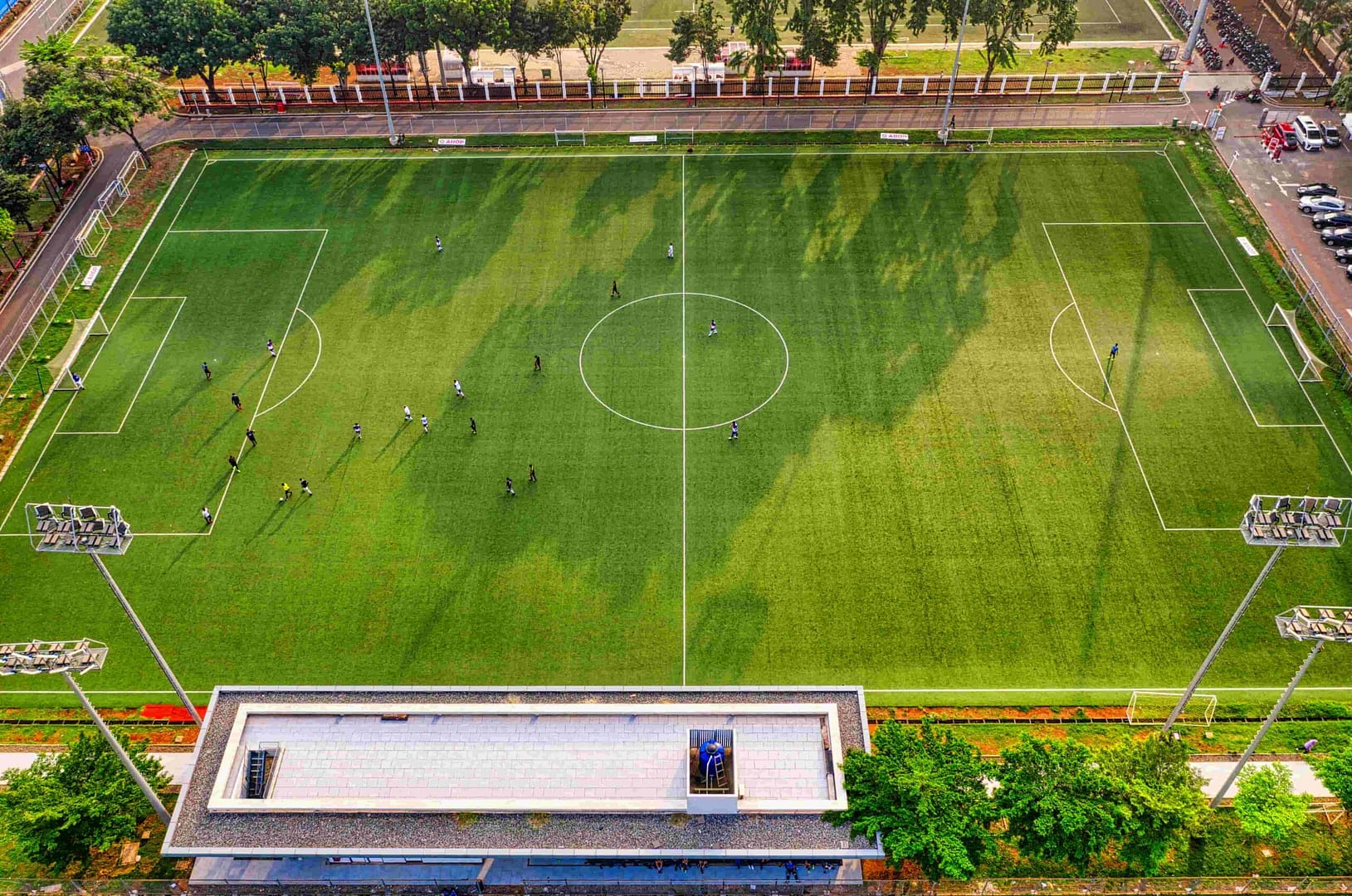How Many Players on Soccer Team? Soccer is one of the most popular sports worldwide, enjoyed by millions across all age groups. Whether you’re watching professional leagues, playing in a youth soccer league, or participating in a local rec soccer league high school, one of the most common questions new fans ask is: How many players are on a soccer team?
The answer might seem simple at first—11 players per side—but depending on the level, age group, and rules, the number of players can vary. In this detailed guide, we’ll break down everything you need to know about soccer team sizes, variations in youth and recreational formats, and related soccer rules.
Standard Number of Players on a Soccer Team/How Many Players on Soccer Team
In professional soccer and most competitive leagues, each team fields 11 players on the soccer field at one time. This includes:
1 Goalkeeper (the only player allowed to use hands inside the penalty box)
10 Outfield Players (a mix of defenders, midfielders, and forwards)
That makes 22 players total on the field in a standard game. This format applies to leagues worldwide—from the English Premier League to Major League Soccer (MLS) and even Olympic football competitions.
How Many Players on Soccer Team on the Field for Youth Soccer
The number of players on the field can vary depending on age. For example:
Pee Wee Soccer (Ages 3–5): Often played 3v3 or 4v4, no goalkeepers.
U8 Soccer: Usually 4v4 or 5v5, still simplified rules.
U10 Soccer: Commonly 7v7. If you’ve ever searched “how many players on soccer field for U10”—the standard is seven players per side.
U12 Soccer: Typically 9v9 with goalkeepers included.
U13 and Above: Teams usually transition to the full 11v11 format.
This progressive increase in players helps young athletes gradually adapt to the full-size field and more complex soccer rules.
High School and College Soccer
High school soccer in the U.S. follows the 11-player format, just like the professional game. Matches are often divided into two 40-minute halves, making them slightly shorter than international matches. Many players participate in rec soccer league high school competitions, which are great for skill development before college-level play.
College soccer, regulated by the NCAA, also features 11 players per side. Matches last 90 minutes, with two 45-minute halves.
Substitutions and Squad Sizes
Although only 11 players are on the field at once, teams have larger rosters. For instance:
Professional squads may have 23 players available for tournaments.
During a match, the substitution rules vary by competition. FIFA recently allowed up to five substitutions per game, while MLS has its own overtime rules if a match goes beyond regulation.
This flexibility allows managers to rotate players, manage fatigue, and strategize effectively.

Variations in Adult Soccer and Local Clubs
If you’ve ever looked for adult soccer clubs near me, you’ll notice formats vary. Recreational adult leagues often play 7v7 or 9v9 due to smaller fields or limited squad sizes. Indoor soccer is also popular, typically played 5v5 on smaller pitches with walls.
For those joining these leagues, finding the contact info for local soccer clubs youth and adult is the best way to learn the specific rules in your area.
Soccer Season and Global Popularity
Soccer seasons vary depending on country:
Europe: August to May (club competitions like the Premier League, La Liga, Serie A)
MLS (USA): February to December
Youth Leagues in the U.S.: Often seasonal, running fall and spring
Globally, soccer’s popularity outshines most other sports. Studies on the popularity of sports worldwide show that over 4 billion fans follow soccer—making it the most-watched and most played sport on the planet.
Soccer Rules That Impact Team Numbers
Some common soccer rules related to team size include:
A match cannot start or continue if a team has fewer than 7 players on the field.
Red cards reduce a team’s total—so if multiple players are sent off, the game could end early.
Overtime rules differ across leagues. For example, MLS overtime rules historically had golden goal formats, though now tied matches often go straight to penalty shootouts.
Interesting Trivia About Soccer Numbers
How Many Players on Soccer Team? Many famous soccer players wore number 21—including Andrea Pirlo and David Silva.
The best number 6 players in football are often defensive midfielders like Claude Makélélé or N’Golo Kanté, who control the tempo of the game.
Olympic football winners often use younger squads (U23 with three senior players), meaning not every Olympic team mirrors the professional club setup.
FAQs of How Many Players on Soccer Team
1. How many players are on a soccer team?
A standard team has 11 players on the field: one goalkeeper and ten outfield players.
2. How many players are allowed in youth soccer?
It varies by age group. U10 often plays 7v7, while U12 plays 9v9 before transitioning to 11v11.
3. How long are high school soccer games?
High school games are 80 minutes long, divided into two 40-minute halves.
4. Why does soccer count up instead of down?
Soccer uses a continuous clock, counting up from 0. Extra time is added at the end of each half to make up for stoppages.
5. What months are the soccer season?
In Europe, it runs from August to May; in the U.S. (MLS), it generally runs from February to December.
6. How long is an NFL football game compared to soccer?
NFL games last around 3 hours with frequent stoppages, while soccer matches last 90 minutes with continuous play.
About Goalnyx
At Goalnyx, we are passionate about bringing soccer fans closer to the game. From updated fixtures, stats, and player profiles to insightful blogs that explain soccer rules and history, our mission is to connect fans with the world’s most beloved sport. Whether you’re following your favorite Olympic football winners, searching for local youth soccer league opportunities, or exploring the popularity of sports worldwide, Goalnyx ensures you never miss a moment.







